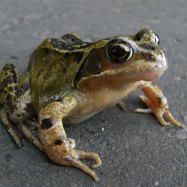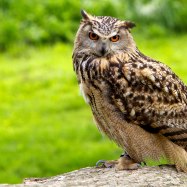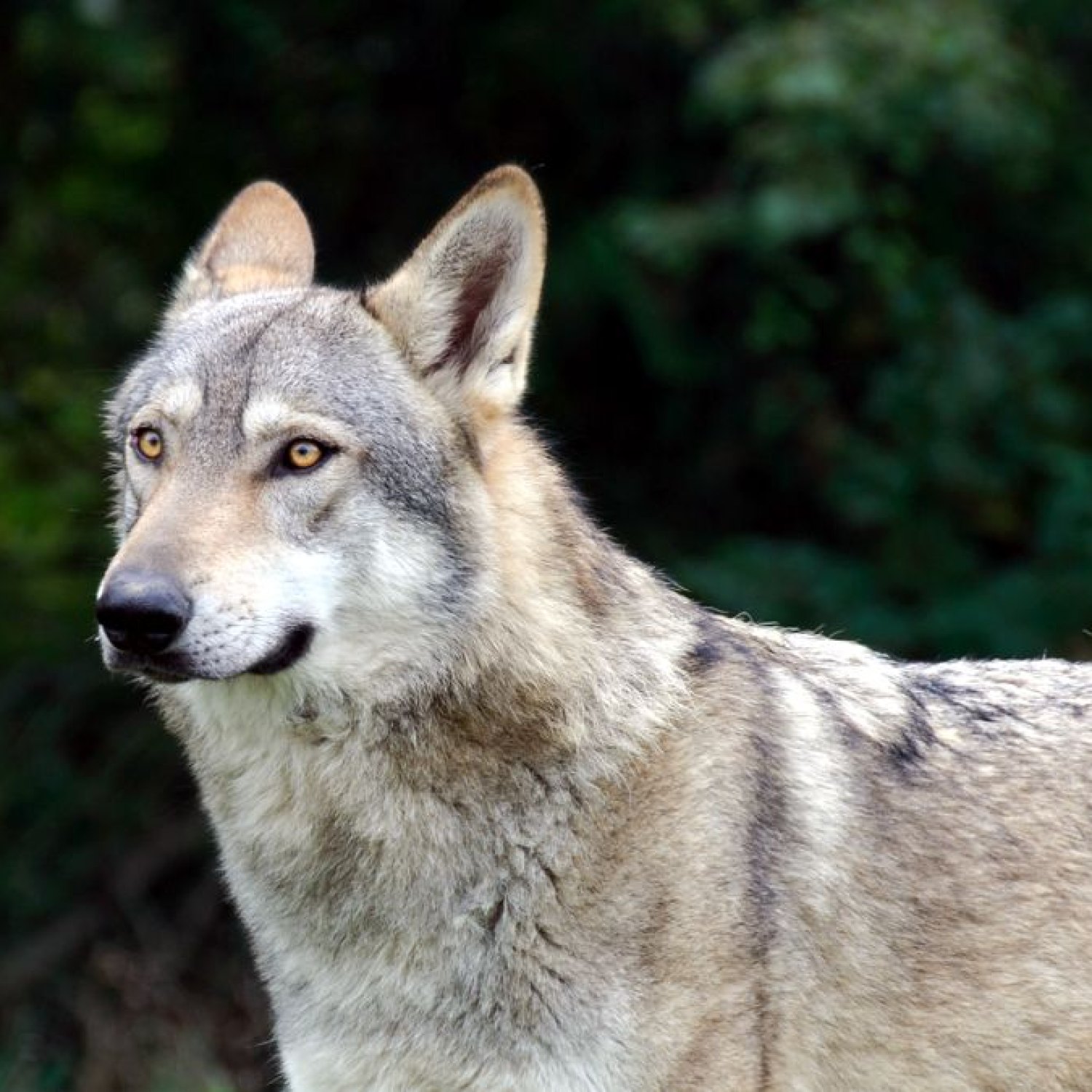
Apennine Wolf
4-5 feet
The Apennine Wolf, a member of the Canidae family, can be found in the Apennine Mountains. With a length of 4-5 feet, it is a medium-sized predator known for its intelligence and strong hunting abilities. Though once a common sight, their population has dwindled due to human activities. Conservation efforts are now in place to protect this majestic creature.
Animal Details Summary:
Common Name: Apennine Wolf
Kingdom: Animalia
Habitat: Forests, mountains
The Magnificent Apennine Wolf: A Rare Canine Species in the Heart of Italy
It's a crisp morning in the Apennine Mountains, the sun is slowly rising, and the trees are casting a soft golden glow. Deep within the lush forests, a pack of wolves can be heard howling, a sound that evokes both fear and awe in those who hear it. Among these ancient mountains, there is one species of wolf that stands out from the rest - the Apennine Wolf.Scientifically known as Canis lupus italicus, the Apennine Wolf is a subspecies of the gray wolf (Canis lupus) that is endemic to the Apennine Mountains in Italy Apennine Wolf. This magnificent animal has a unique set of characteristics that make it a fascinating subject for research and a symbol of conservation efforts in the region.
A Unique Classification and Taxonomy
The Apennine Wolf is classified under the Kingdom Animalia, Phylum Chordata, Class Mammalia, Order Carnivora, and Family Canidae. Its scientific name, Canis lupus italicus, derives from its genus Canis, which includes other wolf and dog species, and its species name, lupus, which means "wolf" in Latin. The subspecies name italicus refers to its geographical location in Italy.The Apennine Wolf shares its genus with other subspecies of the gray wolf, including the Eurasian wolf (Canis lupus lupus) and the North American wolf (Canis lupus occidentalis). However, due to geographical isolation and adaptation over centuries, the Apennine Wolf has evolved to become genetically distinct from other subspecies.
The Apennine Wolf's Natural Habitat
The Apennine Mountains are a stretch of rugged and ancient mountains that run along the length of the Italian peninsula, covering over 1,200 kilometers. The Apennines are the backbone of Italy, with its highest peak, Monte Corno, reaching over 9,500 feet. These mountains are dotted with lush forests, pristine lakes, and picturesque valleys, creating a perfect environment for the Apennine Wolf to thrive Amethystine Python.One of the fascinating aspects of the Apennine Wolf is its ability to adapt to a wide range of habitats within the Apennine Mountains. They are capable of surviving in temperatures as low as -20 degrees Celsius and as high as 30 degrees Celsius. They are also known to inhabit different types of forests, including deciduous, coniferous, and mixed forests. This adaptability has allowed the Apennine Wolf to survive in the harsh and constantly changing conditions of the Apennine Mountains.
Diet and Feeding Behavior
The Apennine Wolf's diet consists mainly of large herbivores such as deer, wild boar, and occasionally domesticated animals like sheep and goats. They have a powerful bite force and sharp teeth, which makes it easier for them to hunt and take down their prey.Unlike other carnivorous animals that hunt in groups, the Apennine Wolf prefers to hunt alone or in small packs. Their efficient hunting techniques and high success rate have earned them the nickname "king of the Apennines." They are also known to cache their food, storing it in various locations, especially during times of abundance, to be consumed later.
Geographical Distribution and Country of Origin
As mentioned earlier, the Apennine Wolf is endemic to the Apennine Mountains in Italy, which is also the country of origin for this subspecies. The Apennines are home to a diverse range of wildlife, and the Apennine Wolf is a crucial part of the ecosystem, playing a crucial role in maintaining the balance of nature.However, the Apennine Wolf population has significantly declined over the years, mainly due to habitat loss, poaching, and hunting. As a result, the Apennine Wolf is now listed as a critically endangered species, and conservation efforts have been put in place to protect its remaining population.
A Majestic Gray and White Coat
The Apennine Wolf's coat is one of its most distinctive features, with a beautiful combination of gray and white fur. The colors may vary depending on the season and individual genetics, with some individuals having a darker or lighter coat.The thicker layer of fur protects the Apennine Wolf from the cold and harsh weather conditions while blending in seamlessly with its surroundings. This coat is also a unique feature that distinguishes it from other subspecies of the gray wolf.
The Medium-Sized Canine with Graceful Body Structure
The Apennine Wolf is a medium-sized canine with a graceful body structure. They weigh around 50-70 pounds and have an average length of 4-5 feet. The males tend to be larger than the females, and both sexes have a long bushy tail, which they use for balance and communication.The Apennine Wolf's body structure is well-adapted for agility and speed, making them efficient hunters and able to move through dense forests with ease. They also have sharp senses, including excellent vision and hearing, which further aid in their hunting abilities.
Conservation Efforts and the Future of the Apennine Wolf
The Apennine Wolf is an essential part of the natural ecosystem in the Apennine Mountains, and efforts are being made to preserve and protect its remaining population. The main threat to their survival is not only habitat loss but also human-wildlife conflicts, as they are sometimes seen as a threat to livestock.To protect the Apennine Wolf, several initiatives have been put in place, including awareness programs, community involvement, and the creation of protected areas. These efforts have yielded positive results, as the Apennine Wolf population has shown a small but steady increase in recent years.
The Role of Technology in Conservation
As we continue to learn more about the Apennine Wolf, technology has played a crucial role in its conservation. Scientists and conservationists use various methods, such as GPS tracking collars and camera traps, to monitor and study the Apennine Wolf's behavior and population dynamics.One exciting development in this field is the implementation of AI and machine learning in wildlife conservation. Using data collected from camera traps, AI can accurately identify and track individual animals, providing essential data for studying population trends and behavior patterns. This technology has proven to be a game-changer in conservation efforts, as it allows for more efficient and accurate monitoring of endangered species like the Apennine Wolf.
The Apennine Wolf: A Symbol of Resilience and Conservation
The Apennine Wolf has faced numerous challenges over the years, from human-wildlife conflicts to habitat loss and poaching. However, this resilient animal continues to thrive in the heart of Italy, serving as a reminder of the delicate balance between wilderness and human activity.Through conservation efforts and the use of technology, we can continue to protect and preserve this magnificent animal for future generations to admire and appreciate. Let's work together to ensure the survival of the Apennine Wolf and other endangered species, so they can continue to roam and howl in the mountains they call home.

Apennine Wolf
Animal Details Apennine Wolf - Scientific Name: Canis lupus italicus
- Category: Animals A
- Scientific Name: Canis lupus italicus
- Common Name: Apennine Wolf
- Kingdom: Animalia
- Phylum: Chordata
- Class: Mammalia
- Order: Carnivora
- Family: Canidae
- Habitat: Forests, mountains
- Feeding Method: Carnivorous
- Geographical Distribution: Apennine Mountains in Italy
- Country of Origin: Italy
- Location: Apennine Mountains
- Animal Coloration: Gray, white
- Body Shape: Medium-sized
- Length: 4-5 feet
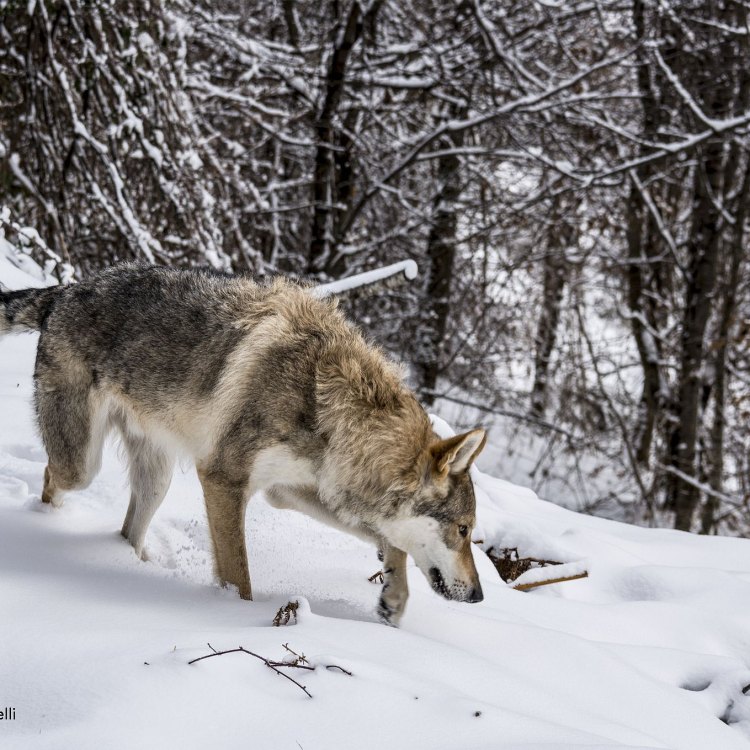
Apennine Wolf
- Adult Size: 70-85 pounds
- Average Lifespan: 8-10 years
- Reproduction: Sexual
- Reproductive Behavior: Mating occurs in late winter or early spring
- Sound or Call: Howl
- Migration Pattern: Sedentary
- Social Groups: Pack
- Behavior: Territorial and monogamous
- Threats: Habitat loss, illegal hunting
- Conservation Status: Endangered
- Impact on Ecosystem: Keystone predator
- Human Use: Hunting, folklore
- Distinctive Features: Dark fur on the back, pale fur on the belly
- Interesting Facts: The Apennine Wolf is a subspecies of the gray wolf.
- Predator: No natural predators
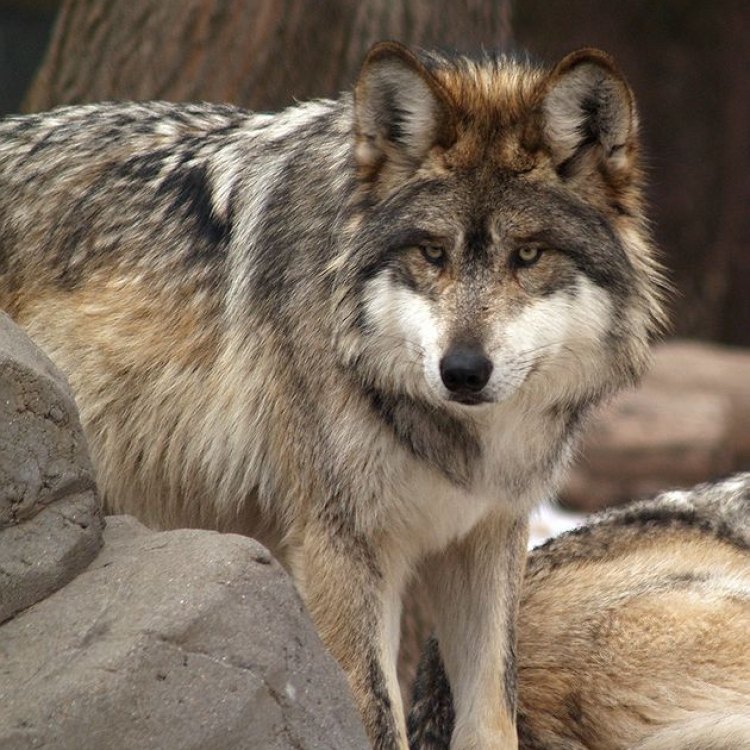
Canis lupus italicus
The Endangered Apennine Wolf: Italy's Iconic Keystone Predator
In the rugged and beautiful Apennine Mountains of Italy, a fearsome and elusive creature roams the forests and hills. The Apennine Wolf, also known as the Italian Wolf or Canis lupus italicus, is a subspecies of the gray wolf that has captivated human imagination for centuries. With its dark fur on its back and pale fur on its belly, this unique and powerful animal is a symbol of strength, resilience and adaptability.But despite its iconic status, the Apennine Wolf is facing an uncertain future PeaceOfAnimals.Com. The International Union for Conservation of Nature (IUCN) has listed it as endangered, with only around 500 individuals remaining in the wild. Habitat loss, illegal hunting, and human persecution have all contributed to its decline, making it vital to understand and protect this elusive predator.
So, what sets the Apennine Wolf apart from its gray wolf counterparts, and why is it so crucial for the ecosystem and the cultural heritage of Italy?
Distinctive Features and Behavior
The Apennine Wolf, like all wolves, belongs to the Canidae family, but its distinct subspecies features set it apart. The most recognizable one is its striking color pattern, with dark fur on the back and pale fur on the belly. This unique characteristic allows for optimal camouflage in its mountainous habitat, where it blends seamlessly with the surrounding rocks and vegetation.But it is not just the physical appearance that distinguishes the Apennine Wolf. Its behavior is also unique and different from other gray wolf subspecies. They are territorial and form small social groups known as packs. Unlike other wolves, they are monogamous and mate for life Apple Head Chihuahua.
Mating typically occurs in late winter or early spring, and a female wolf can give birth to a litter of 4-6 pups. These pups are raised and nurtured by the entire pack, showing their strong family bond and social behavior.
The Apennine Wolf is also known for its mesmerizing howls, which serve as a communication mechanism between pack members and a way to mark and defend their territory. These howls can be heard from miles away, and it is a powerful sound that reflects their strength and dominance in the ecosystem.
Role in the Ecosystem
The Apennine Wolf is a keystone predator, which means it plays a crucial role in maintaining the balance and health of the ecosystem. As a top predator, it regulates the population of herbivores, such as deer and wild boar, by culling the weak and sick individuals. This prevents overgrazing and allows the growth of diverse vegetation, making the Apennine Mountains a thriving habitat for a variety of species.But if the Apennine Wolf were to become extinct, it would have a ripple effect on the entire ecosystem. With no natural predators, the herbivore population would likely explode, leading to overgrazing and damaging the vegetation. This, in turn, affects the availability of food for other species, potentially leading to the decline of other animal populations.
Human Perceptions and Interactions
For centuries, the Apennine Wolf has been a part of Italian folklore and culture. It has been both feared and admired, with its howls inspiring awe and fear in equal measure. In ancient times, wolves were revered and worshipped by some cultures, but as human civilization grew, fear and misunderstanding led to negative perceptions and interactions with wolves.The Apennine Wolf has been hunted and persecuted for centuries, with a widespread belief that they are a threat to humans and livestock. This perception is reinforced by the media and entrenched in some traditional farming practices that see wolves as a nuisance and a danger. As a result, illegal hunting and human-wolf conflicts have significantly contributed to the decline of this species.
The Race Against Extinction
But there is hope. Conservation efforts, including research, education, and community outreach, are underway to protect and restore the Apennine Wolf's population. Several organizations, such as the Wolf Apennines project, are working to promote coexistence and understanding between humans and wolves.At the same time, governments and policymakers are implementing measures to protect the wolves and their habitats. The European Union's Habitats Directive and the Italian Wolf Conservation Strategy are critical policies that recognize the importance of protecting this iconic species.
Human Use and Hunting
Sadly, despite its conservation status, the Apennine Wolf is still hunted, both legally and illegally. The wolf hunting season in Italy starts in autumn and can last for several weeks, with hunters targeting not only the wolves but also their prey. This poses a significant threat to the already vulnerable wolf population, further impacting their survival and recovery.On the other hand, the Apennine Wolf holds significant economic and cultural value for local communities. Through ecotourism, this endangered species can bring in much-needed revenue and create a positive perception of wolves among the public. This highlights the importance of finding a balance between human needs and wildlife conservation.
Interesting Facts and Future Hopes
The Apennine Wolf is not just a subspecies of the gray wolf; it is also a symbol of resilience and adaptation. Despite centuries of persecution, it has survived and thrived in the harsh and unpredictable mountain environment. This perseverance gives us hope that, with the right conservation efforts and policies, this iconic subspecies could make a comeback and thrive once again in its natural habitat.But to achieve this, we need to change our perception and attitude towards the Apennine Wolf. Education and awareness are key in understanding and appreciating the importance of this elusive predator in the ecosystem and its cultural significance. Only then can we work towards a future where humans and wolves can coexist peacefully, and the Apennine Wolf can once again reign supreme in its mountain kingdom.

The Magnificent Apennine Wolf: A Rare Canine Species in the Heart of Italy
Disclaimer: The content provided is for informational purposes only. We cannot guarantee the accuracy of the information on this page 100%. All information provided here may change without prior notice.











